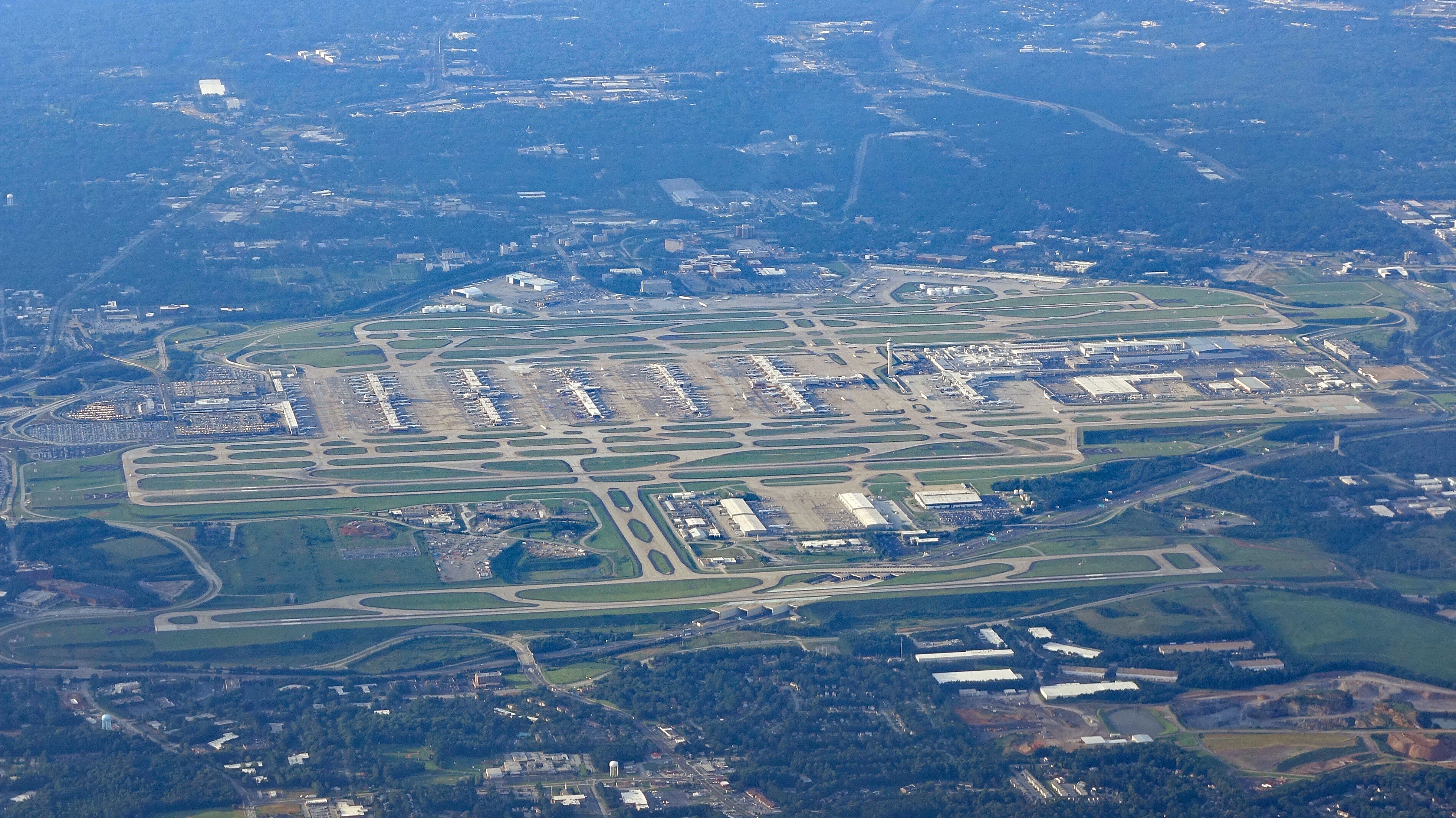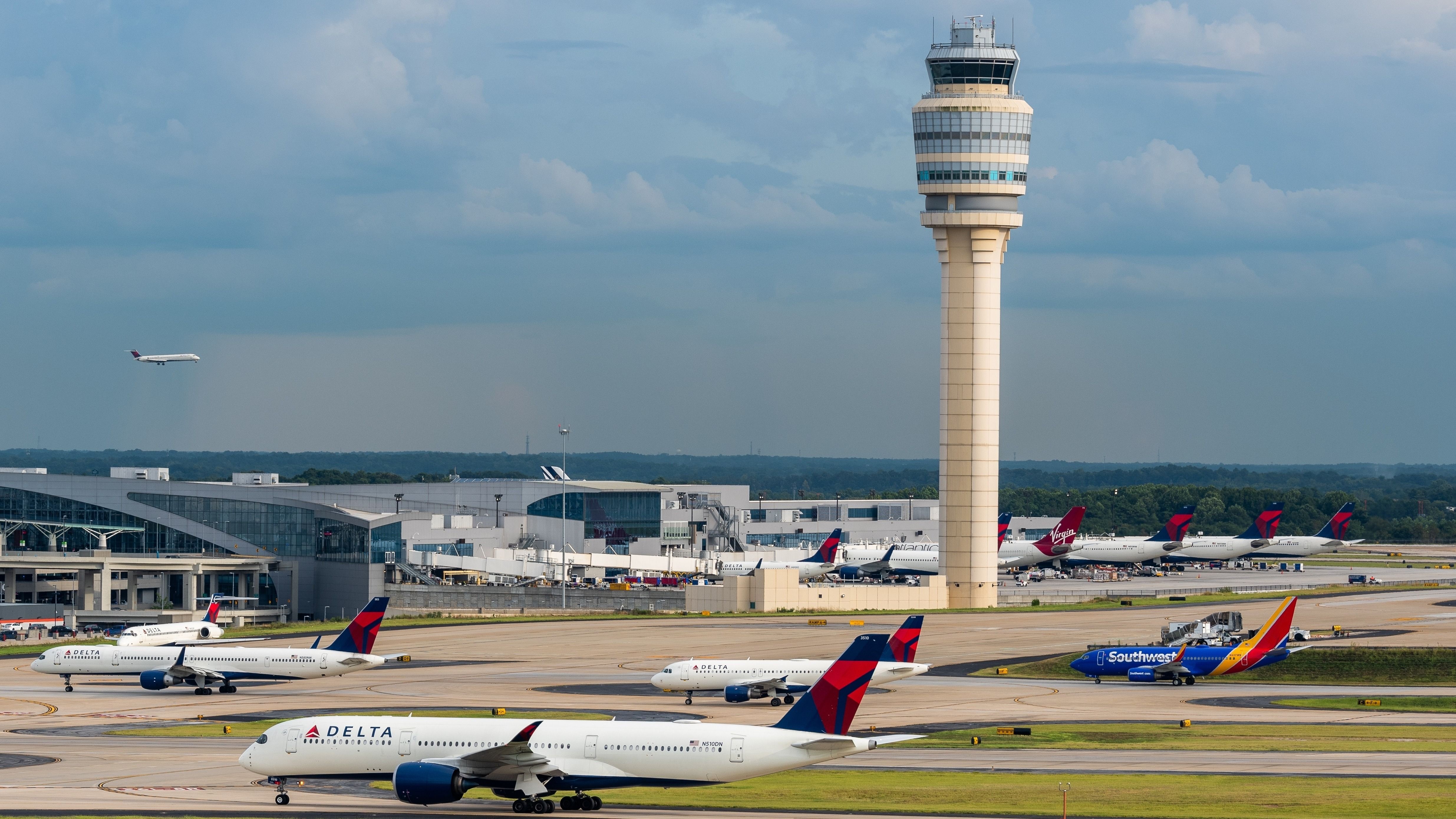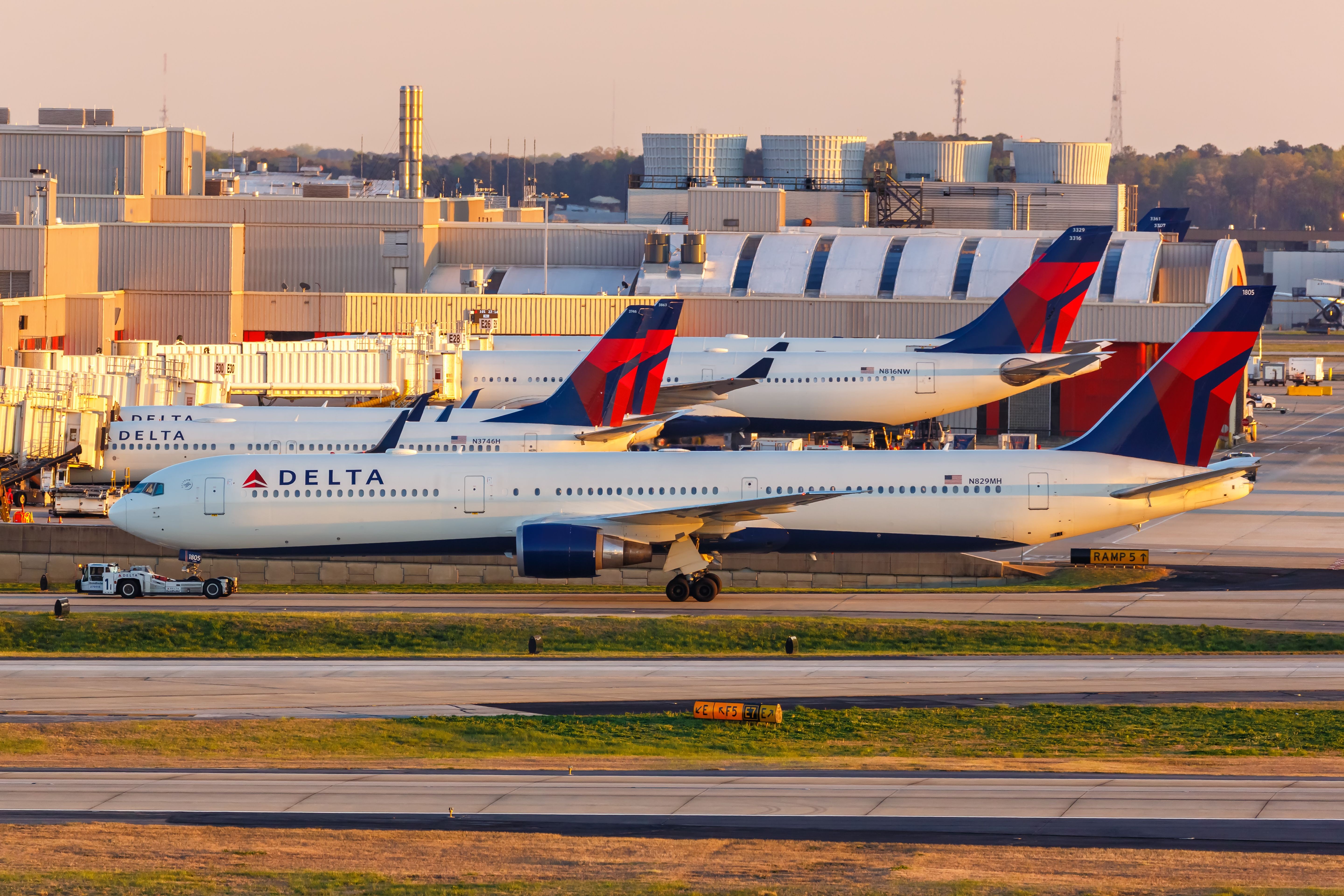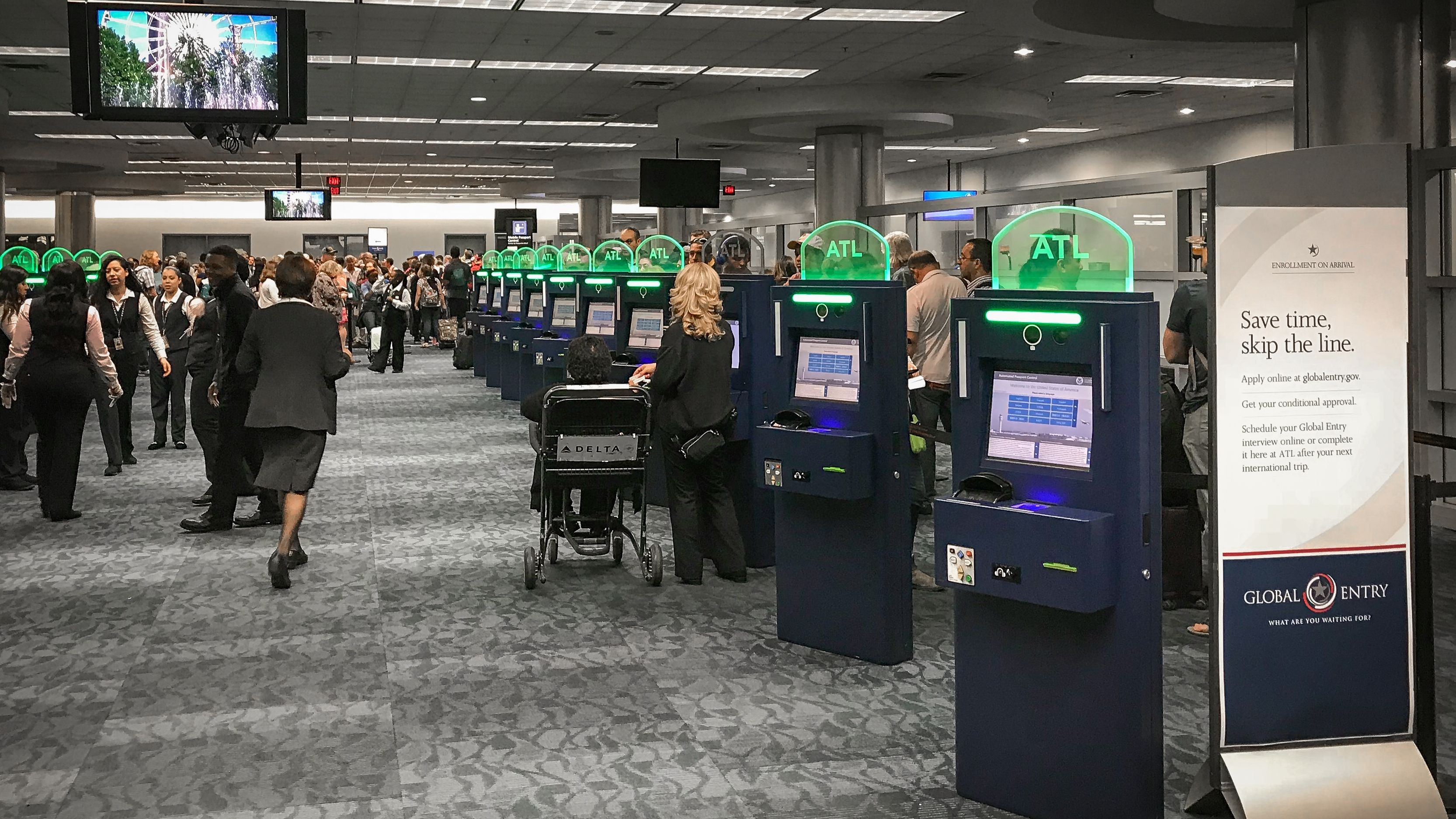Why Is Atlanta Airport So Busy? Atlanta’s Hartsfield-Jackson International Airport is the world’s busiest airport due to its prime location, extensive flight network, and status as Delta Air Lines’ main hub. At WHY.EDU.VN, we provide detailed insights into this aviation phenomenon and explore the factors contributing to its immense traffic. Delve into ATL’s operational efficiency, connectivity, and economic impact and discover why Atlanta remains a global travel nexus.
1. Strategic Geographic Location of Atlanta Airport
1.1. Heart of the Southeastern United States
Atlanta’s strategic location in the heart of the Southeastern United States plays a pivotal role in its airport’s high traffic volume. Situated in Georgia, Atlanta serves as a central hub for economic activities in the region, attracting business travelers and tourists alike. Its proximity to major population centers and key economic hubs makes it an ideal connecting point for domestic and international flights.
Atlanta’s Hartsfield-Jackson International Airport benefits from its central position within a two-hour flight radius of major American cities such as New York, Dallas, Houston, and Chicago. This accessibility makes it a convenient hub for passengers traveling across the country. Moreover, its location provides easy access to the Caribbean and Central America, enhancing its role as a gateway for international travel.
1.2. Accessibility and Infrastructure
The airport’s connectivity is further enhanced by its access to major highways and rail networks. This robust infrastructure allows passengers from a wide geographic area to easily reach the airport, contributing to its high passenger volume. According to CNN, several factors contribute to Atlanta’s success as an air travel hub, including strong support from local business leaders and government for airport investments since the 1920s, its location 10 miles south of downtown Atlanta, and the relatively flat terrain surrounding the airport.
1.3. Government and Business Support
Since the 1920s, Atlanta has benefited from strong backing from both local business leaders and the government, who have consistently invested in its airport infrastructure. This long-term commitment has been crucial in establishing and maintaining its position as a leading aviation hub. The ongoing investments ensure that the airport remains at the forefront of the industry, capable of accommodating increasing passenger numbers and adapting to evolving aviation technologies.
1.4. Terrain Advantages
Atlanta’s airport benefits from being located in one of the few flatter areas in an otherwise hilly region. This geographical advantage provides ample space for expansion and development, allowing the airport to grow and adapt to increasing demand. The availability of flat land ensures efficient operations and facilitates the construction of additional runways, terminals, and other necessary facilities.
2. Extensive Route Network of Atlanta Airport
2.1. Domestic and International Reach
Hartsfield-Jackson Atlanta International Airport boasts an extensive network of routes, offering non-stop service to over 150 domestic and numerous international destinations across six continents. This vast network enables passengers to travel to cities both near and far, making Atlanta a crucial hub for global aviation. Whether traveling for business or leisure, passengers can easily connect to their desired destinations through ATL.
2.2. Key International Destinations
The airport provides direct connections to major international locations, facilitating global travel. Some of the key international destinations with direct flights from Atlanta include:
- Toronto, Canada (2h 12m)
- San Jose, Costa Rica (4h 2m)
- London, United Kingdom (8h 10m)
- Paris, France (8h 25m)
- São Paulo, Brazil (9h 35m)
- Istanbul, Turkey (10h 20m)
- Doha, Qatar (13h 30m)
- Tokyo, Japan (14h 10m)
- Johannesburg, South Africa (15h 0m)
This wide array of international destinations underscores Atlanta’s role as a significant gateway for global travel.
2.3. Connecting Passengers
According to Infinite Flight, approximately 65-80% of passengers at ATL are connecting passengers. This high percentage highlights the airport’s importance as a connecting hub for travelers. Additionally, over 80% of the U.S. population resides within a two-hour flight from ATL, as reported by the airport. This accessibility and central location make it a convenient choice for passengers seeking connecting flights throughout the Southeast U.S. and Latin America.
2.4. Connectivity Statistics
Atlanta’s prominence as a connecting hub is supported by its strategic location and extensive route network. The following statistics further illustrate its significance:
| Statistic | Value | Source |
|---|---|---|
| Connecting Passengers | 65-80% | Infinite Flight |
| Population within 2-hour Flight | >80% | ATL Airport Fact Sheet |





3. Extensive Airline Network at Atlanta Airport
3.1. Diverse Airline Operations
Hartsfield-Jackson Atlanta International Airport is served by a diverse range of airlines from around the world, providing passengers with numerous options for reaching their destinations. According to FlightsFrom.com, 23 airlines offer scheduled passenger flights to and from ATL. This extensive airline network ensures that travelers have access to a wide variety of routes and services.
3.2. Major U.S. Airlines
Most major U.S. airlines operate at ATL, contributing to its high passenger traffic. These airlines include:
- Alaska Airlines
- American Airlines
- Delta Air Lines
- Frontier Airlines
- JetBlue Airways
- Southwest Airlines
- Spirit Airlines
- United Airlines
The presence of these major carriers enhances Atlanta’s connectivity and provides passengers with numerous flight options.
3.3. International Airlines
In addition to domestic airlines, ATL is also served by several international carriers, further solidifying its status as a global hub. These international airlines include:
- Air France
- British Airways
- KLM
- Korean Air
- Lufthansa
- Qatar Airways
- Turkish Airlines
- Virgin Atlantic
These airlines connect Atlanta to destinations around the world, facilitating international travel and trade.
3.4. Airline Presence Impact
The presence of both domestic and international airlines at ATL significantly contributes to its status as the world’s busiest airport. The extensive network of airlines provides passengers with a wide range of choices, making Atlanta a convenient and attractive option for travelers worldwide. The diversity of airlines also supports the airport’s role as a major cargo hub, facilitating the movement of goods and services globally.
4. Delta Air Lines’ Primary Hub at Atlanta Airport
4.1. Delta’s Dominance
Delta Air Lines plays a crucial role in the operations of Hartsfield-Jackson Atlanta International Airport. As one of the world’s largest airlines, Delta carried over 190 million passengers in 2023. The airline’s decision to designate Atlanta as its primary hub and operational base significantly contributes to the airport’s high traffic volume. Delta’s extensive operations at ATL make it a central connecting point for flights across the United States and around the world.
4.2. Impact on Airport Traffic
With Atlanta serving as Delta’s primary hub, the airport handles a substantial portion of the airline’s flights. This leads to a high volume of connecting passengers, which is a major factor in ATL’s overall traffic. Delta’s operations at ATL include numerous daily departures and arrivals, connecting passengers to destinations throughout North America, Latin America, Europe, and Asia.
4.3. Key Statistics
Delta’s significant presence at ATL is highlighted by the following statistics:
| Statistic | Value |
|---|---|
| Delta Staff | 100,000 |
| Daily Delta Flights | 4,000 (800 from ATL) |
| Route Network | 280 destinations |
| Cargo Transport | 2.2 billion cargo-ton miles/year |
These figures underscore Delta’s substantial impact on Atlanta’s airport operations.
4.4. On-Time Performance
Delta was recognized as North America’s most on-time airline in 2023, enhancing its popularity among passengers. This reliability is a key factor in attracting travelers to fly with Delta and connect through Atlanta. Delta’s commitment to punctuality helps ensure smooth operations at ATL, minimizing delays and improving the overall passenger experience.
5. State-of-the-Art Facilities at Atlanta Airport
5.1. Handling Passenger Volume
To accommodate over 104.6 million passengers annually, Hartsfield-Jackson Atlanta International Airport relies on advanced facilities and systems that ensure efficiency and enhance the passenger experience. According to How Stuff Works, ATL has been named the most efficient airport in the world 19 times by the Air Transport Research Society (ATRS) at the University of Maryland. These accolades reflect the airport’s commitment to operational excellence and passenger satisfaction.
5.2. Modern Terminals
ATL features modern terminals equipped with a wide range of dining and retail options, providing passengers with a comfortable and enjoyable travel experience. These amenities cater to the diverse needs of travelers, offering everything from quick snacks to gourmet meals, and from souvenir shops to high-end boutiques. The airport’s terminals are designed to maximize convenience and minimize stress for passengers.
5.3. Key Facilities
According to ATL, the airport boasts several impressive facilities, including:
- 152 domestic and 40 international gates
- The Plane Train: an underground 3-mile train network connecting the airport’s seven concourses, carrying over 200,000 passengers each day
- More than 30,000 public parking spaces
- ATL SkyTrain: connecting passengers to the Rental Car Center, Georgia International Convention Center, hotels, and office buildings
These facilities are essential for managing the high volume of passengers and ensuring efficient operations at the airport.
5.4. Continuous Improvement
Hartsfield-Jackson Atlanta International Airport continually invests in upgrades and expansions to maintain its status as a world-class facility. These ongoing improvements ensure that the airport remains at the forefront of the aviation industry, capable of accommodating future growth and providing passengers with the best possible travel experience. The airport’s commitment to innovation and efficiency is a key factor in its sustained success.
6. Economic Impact of Atlanta Airport
6.1. Regional Economic Driver
Hartsfield-Jackson Atlanta International Airport is not only a transportation hub but also a significant economic driver for the city of Atlanta and the state of Georgia. Its operations support a wide range of industries, including tourism, hospitality, logistics, and manufacturing. The airport generates billions of dollars in revenue each year and provides employment for tens of thousands of people.
6.2. Job Creation
The airport is a major employer in the region, providing jobs for pilots, flight attendants, ground crew, security personnel, customer service representatives, and many others. The economic activity generated by these jobs has a ripple effect throughout the local economy, supporting businesses and communities. Additionally, the airport attracts companies from around the world to establish a presence in Atlanta, further boosting job creation.
6.3. Tourism and Hospitality
The airport plays a vital role in attracting tourists to Atlanta and the surrounding areas. Millions of visitors pass through the airport each year, contributing to the local tourism and hospitality industries. These visitors spend money on hotels, restaurants, attractions, and transportation, generating revenue for local businesses and supporting jobs in the hospitality sector.
6.4. Trade and Logistics
Hartsfield-Jackson Atlanta International Airport is a major hub for international trade and logistics. Its cargo operations facilitate the movement of goods between the United States and other countries, supporting businesses involved in import and export activities. The airport’s location and infrastructure make it an ideal distribution center for companies serving the Southeastern United States and beyond.
7. Managing Growth and Challenges at Atlanta Airport
7.1. Capacity Expansion
To maintain its position as the world’s busiest airport, Hartsfield-Jackson Atlanta International Airport must continually expand its capacity to accommodate increasing passenger numbers. This involves adding new terminals, runways, and parking facilities. The airport also invests in technology and infrastructure improvements to enhance efficiency and reduce congestion.
7.2. Infrastructure Improvements
The airport is committed to making ongoing infrastructure improvements. These upgrades enhance the passenger experience and ensure smooth operations. This includes modernizing baggage handling systems, upgrading security technology, and improving transportation services. The airport also invests in sustainable initiatives to reduce its environmental impact.
7.3. Security Enhancements
Security is a top priority at Hartsfield-Jackson Atlanta International Airport. The airport works closely with federal agencies to implement security measures and technologies. It invests in advanced screening equipment, enhanced surveillance systems, and trained security personnel. It also conducts regular drills and exercises to ensure that it is prepared to respond to any security threats.
7.4. Addressing Delays and Congestion
Despite its efficient operations, Hartsfield-Jackson Atlanta International Airport sometimes experiences delays and congestion, especially during peak travel times. The airport works to address these challenges by optimizing flight schedules, improving air traffic control procedures, and implementing new technologies to manage traffic flow. It also communicates with passengers to provide real-time updates and minimize disruptions.
8. Sustainability Initiatives at Atlanta Airport
8.1. Environmental Responsibility
Hartsfield-Jackson Atlanta International Airport is committed to environmental responsibility and sustainability. The airport has implemented several initiatives to reduce its carbon footprint, conserve energy and water, and minimize waste. It also works to protect the environment around the airport and support local communities.
8.2. Energy Conservation
The airport has implemented several energy conservation measures, such as installing energy-efficient lighting, upgrading HVAC systems, and using renewable energy sources. The airport has also set goals to reduce its energy consumption and increase its use of renewable energy.
8.3. Water Conservation
The airport has implemented water conservation measures, such as installing low-flow fixtures, using recycled water for irrigation, and reducing water usage in its operations. The airport has also set goals to reduce its water consumption and promote water conservation among its employees and passengers.
8.4. Waste Reduction
The airport has implemented waste reduction and recycling programs, such as composting food waste, recycling paper, plastic, and metal, and reducing the use of disposable products. The airport has also set goals to increase its recycling rate and reduce the amount of waste that it sends to landfills.
9. Future Developments at Atlanta Airport
9.1. Expansion Plans
Hartsfield-Jackson Atlanta International Airport has long-term expansion plans to accommodate future growth. These plans include adding new terminals, runways, and parking facilities. The airport also plans to invest in technology and infrastructure improvements to enhance efficiency and improve the passenger experience.
9.2. Technology Upgrades
The airport plans to implement technology upgrades, such as installing self-service check-in kiosks, using biometric screening technology, and providing free Wi-Fi throughout the airport. The airport also plans to develop mobile apps and online tools to help passengers navigate the airport and manage their travel plans.
9.3. Enhancing Passenger Experience
The airport also plans to enhance the passenger experience. This includes adding more dining and retail options, creating more comfortable seating areas, and providing more amenities for families with children. The airport also plans to improve its customer service and provide more assistance to passengers with disabilities.
9.4. Community Engagement
The airport plans to engage with local communities and support local initiatives. This includes providing grants to community organizations, sponsoring local events, and partnering with local businesses. The airport also plans to work to reduce its environmental impact and protect the environment around the airport.
10. Frequently Asked Questions (FAQ) About Atlanta Airport
10.1. Why is Atlanta Airport called Hartsfield-Jackson?
The airport is named after two prominent Atlanta figures: William B. Hartsfield, a former mayor who championed aviation, and Maynard Jackson, Atlanta’s first African American mayor who played a key role in the airport’s expansion.
10.2. How many passengers does Atlanta Airport handle annually?
In 2023, Hartsfield-Jackson Atlanta International Airport handled 104.6 million passengers, making it the world’s busiest airport.
10.3. How many runways does Atlanta Airport have?
Atlanta Airport has five runways, allowing for a high volume of takeoffs and landings.
10.4. What airlines have hubs at Atlanta Airport?
Delta Air Lines has its primary hub at Atlanta Airport, contributing significantly to the airport’s traffic.
10.5. How do I get between terminals at Atlanta Airport?
The Plane Train, an underground train system, connects all terminals and concourses at Atlanta Airport.
10.6. What are the parking options at Atlanta Airport?
Atlanta Airport offers various parking options, including hourly, daily, economy, and Park-Ride lots.
10.7. Are there lounges at Atlanta Airport?
Yes, Atlanta Airport has several lounges, including Delta Sky Clubs, United Club, and American Airlines Admirals Club.
10.8. What dining options are available at Atlanta Airport?
Atlanta Airport offers a wide range of dining options, from fast food to sit-down restaurants, catering to diverse tastes.
10.9. What shopping options are available at Atlanta Airport?
Atlanta Airport features numerous retail stores, including duty-free shops, clothing stores, and souvenir shops.
10.10. How can I find real-time flight information for Atlanta Airport?
You can find real-time flight information on the Atlanta Airport website, airline websites, and flight tracking apps.
Navigating complex questions like “Why is Atlanta Airport so busy?” can be challenging. At WHY.EDU.VN, we specialize in providing clear, comprehensive answers backed by expert knowledge. Whether you’re curious about aviation, economics, or any other subject, our platform is designed to offer the insights you need.
Do you have more questions about air travel, airport operations, or any other topic? Don’t hesitate to ask our experts at WHY.EDU.VN. Visit our website at why.edu.vn, contact us at 101 Curiosity Lane, Answer Town, CA 90210, United States, or reach us via WhatsApp at +1 (213) 555-0101. We’re here to satisfy your curiosity and provide the answers you seek.
